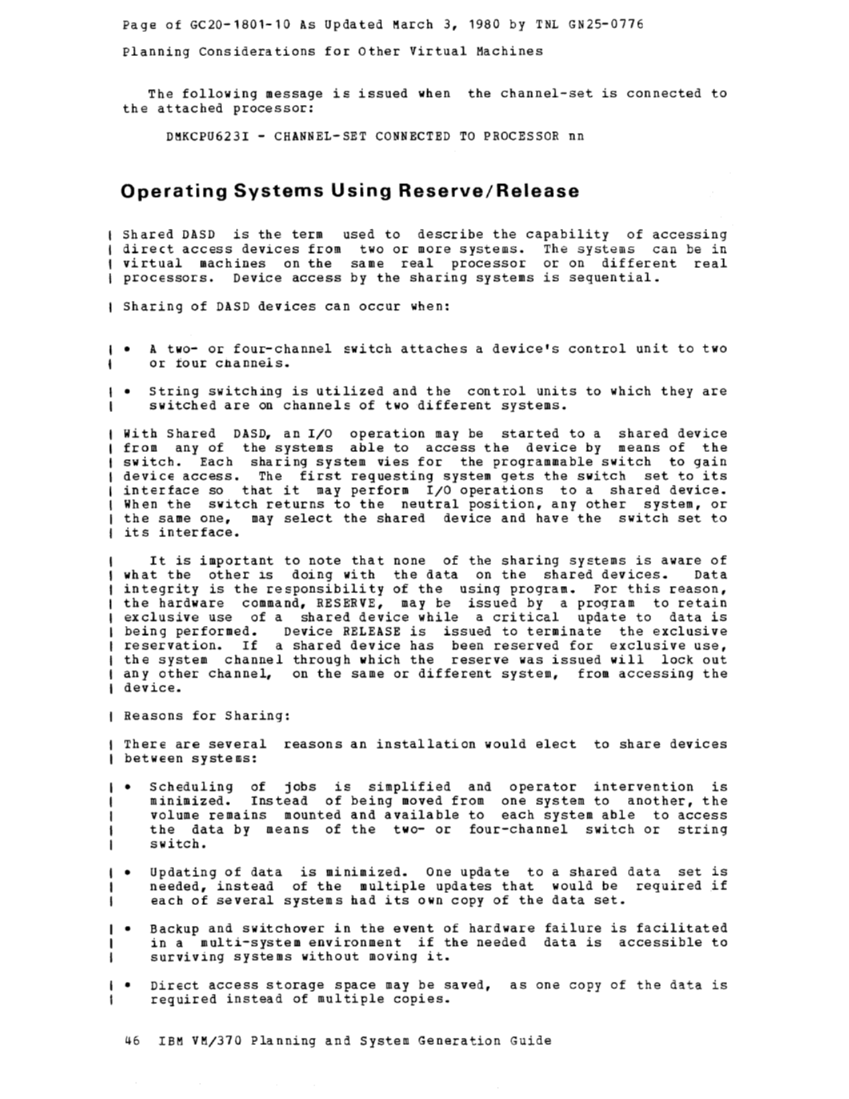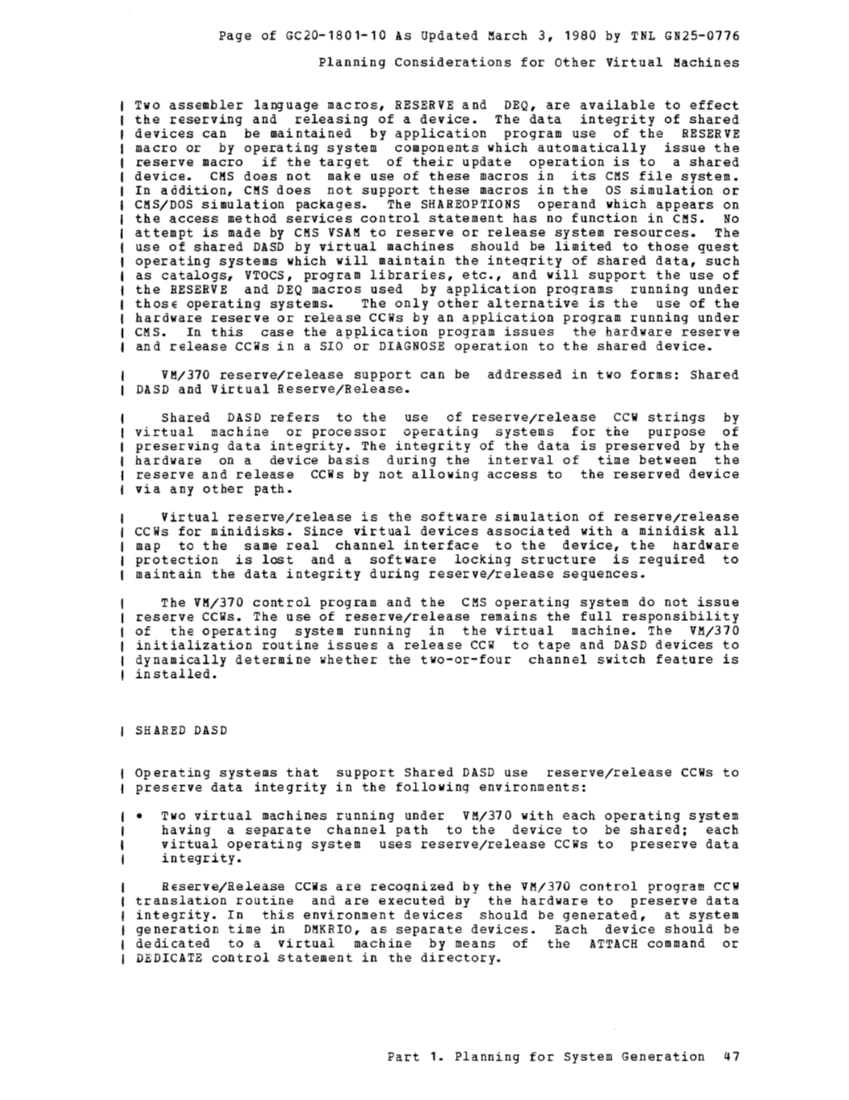The following message is issued when the channel-set is connected to
the attached processor:
Operating
Shared DASD is the term used to describe the capability of accessing
direct access devices
virtual machines on the same real processor
processors. Device access by the sharing systems is sequential.
Sharing of DASD devices can occur when:
With Shared DASD, an
from any of the systems able to access the device by means of the
switch. Each sharing system vies
device access. The first requesting system gets the switch set to its
interface so that it may perform
When the switch returns to the neutral position, any other system, or
the same one, may select the shared device and have the switch set to
its interface.
It is important to note that none of the sharing systems is aware of
what the other is doing with the data on the shared devices. Data
integrity is the responsibility of the using program.
the hardware command,
exclusive use of a shared device while a critical update to data is
being performed. Device RELEASE is issued to terminate the exclusive
reservation. If a shared device has been reserved
the system channel through which the reserve was issued will lock out
any other channel, on the same or different system, from accessing the
device.
Reasons
There are several reasons an installation would elect to share devices
between systems:
46











































































































































































































































































































































































































































































































































